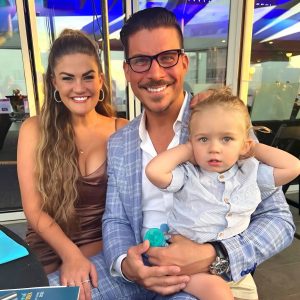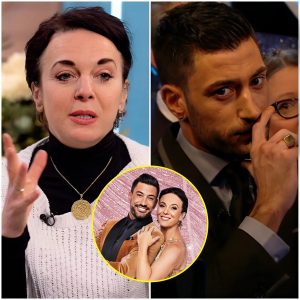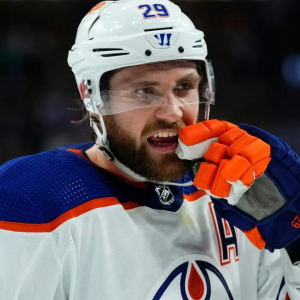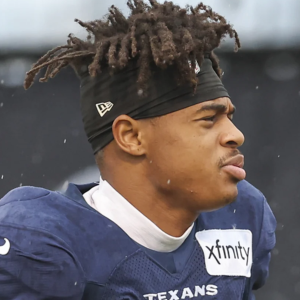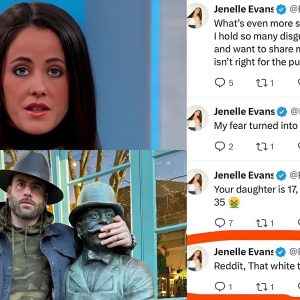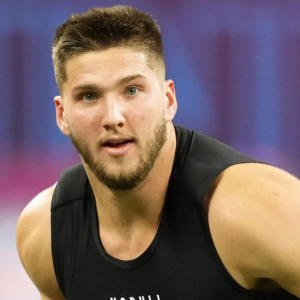Stuart Skinner started 80 games last season — regular season and playoffs — and logged 4734:41 of time on ice. Only Sergei Bobrovsky (82 starts and 4833:46) played more. It was Bobrovsky’s 14th NHL season, while Skinner just finished his second.
Skinner turns 26 on November 1st, but in his first two seasons, he’s gained valuable experience and has started the fourth-most total games among NHL goalies with 140 and the third-most playoff games with 35. Jake Oettinger has started 152 games, including 38 playoff games, Bobrovsky has started 149 games, including 42 playoff tilts, and Alexander Georgiev started 142 games, including 18 in the postseason.
Bobrovsky and Georgiev were both undrafted goalies, while Oettinger was the 26th pick in 2017 when Skinner went 78th. The 2017 draft also produced Jeremy Swayman (111th pick to Boston) and Ukko-Pekka Luukonen (54th pick to Buffalo). Since being drafted, Oettinger has started 184 regular season games, followed by Swayman (125), Skinner (118) and Luukonen (96). This draft class is off to a good start and in a decade, it will be interesting to see where the 2017 draft class of goalies ranks compared to the 2005 class (Carey Price, Jonathan Quick, Tuuka Rask) the 2012 class (Andrei Vasilevskiy, Connor Hellebuyck, Freddie Andersen, Linus Ullmark) and the 2014 class (Thatcher Demko, Igor Shesterkin, Ilya Sorokin).
Skinner showed his mental toughness and physical abilities when he returned for Game 6 in the second-round v. Vancouver. Skinner had been pulled for Games 4 and 5, after a rough first three games of the series, but he rebounded and played very well in the final two games against Vancouver, outplayed Oettinger in round three and lost in Game 7 to Bobrovsky in the Final. Skinner proved in Game 6 v. Dallas he could steal the Oilers a game, and his final 15 games of the playoffs should give Oilersnation reasons to believe the Oilers can win a Cup with Skinner.
Skinner did make one off-ice change this summer. He switched agents. He is now represented by Ray Petkau of Alpha Hockey. He had been represented by JP Barry of CAA previously. Alpha Hockey has very specific goalie roots, clientele and partnerships, which is likely why Skinner made the switch. He has two years remaining on his $2.6m deal. The agent change is more about contracts and possible sponsorships. The good news for Oilers fans is that Petkau doesn’t have a reputation of “grinding the team for every last dime,” I was told via text from a source in the goalie fraternity.
SHORT OFF-SEASON…
Skinner, like all his Oilers teammates, will have the shortest off-season in franchise history. Florida had a short summer last year after losing the 2023 Stanley Cup and then won in 2024. Tampa Bay went to three consecutive Finals in 2020, 2021 and 2022, so I’m not sold the short off-season will be that detrimental for the Oilers. It is all about how they use their time. I caught up with Kevin Woodley of In Goal Magazine on Sports 1440 last week to get his thoughts on Skinner’s short summer, working with Adam Francilia and more.
Jason Gregor: Skinner will have a shorter off-season than last year. What’s the challenge? What’s the difference? Is it easier in some way, because he doesn’t have to get back in game shape?
Kevin Woodley: Well, I don’t know about easier. It’s different for sure. And this is actually perfect timing.
Last week, we talked a lot about next steps for Stuart and how I saw it as more of just a continued progression on the work he put in this year and sort of building off of that. As I mentioned last week, I was in Kelowna at the time and actually after our conversation, had a conversation with his off-ice trainer, Adam Francilia, as well as another goalie who works out with him and is working out there, Clay Stevenson, who has gone through basically the same thing with the Hershey Bears, winning a Calder Cup championship this year and how it’s affected his off season. Now, obviously, Clay wasn’t the starting goaltender, that was Hunter Shepard, but when you’re in it like that, you’re still doing the work on an everyday basis.
So much like Stuart, he hasn’t been on the ice yet. And so, my expectation is that Stuart’s first time on the ice will be next week in Kelowna with Francilia and that much like Clay, that’s all part of the plan. Everything gets pushed back based on when your season ends.
Now, the first phase of your off season is what they would call, actually, I might be paraphrasing here, they call it restorative. Ryan Miller once told me that after a year of sort of training and putting your body in goaltending position, you needed to take time off at the end of each season and train your body how to be human again because the movements are totally different. They’re not the same. There is a restorative process. It doesn’t mean it’s passive. It’s not just rest. There may be more rest involved, but you’re putting work in to sort of restore the joints, allow the tissue to heal before you get into sort of building it back up for the next season. And so, your phase one is going to last a little longer, which is why Stuart hasn’t been on the ice yet.
For goalies’ off-season there’s three different phases or windows. I think when the season ends as late as it did for him, in some ways, maybe it is easier because they don’t have to find time to fill in the gaps when your season’s over in early April. So, everything just becomes a little tighter in those windows. And it’s why you don’t worry about not being on the ice till the first week of August. It’s not a concern because you need to give it that time to have that restorative phase. Everything they do, all the training they do is directly linked to getting back on the ice to sort of allowing the body to move in patterns and hold the shape that translates directly on the ice to allow them to move from one position to the next.
Literally, when we were there that week, we watched them go from doing some really unique work with resistance, whether it’s bands or in some cases, suspended bands on slideboards, then take that into the gym and try to fire those same movement patterns. And then, boom, later that afternoon on the ice, training that same sort of muscle function and movement and triggers and patterns, all about sort of getting rid of hiccups in movement, getting rid of things that would delay them getting into a set position on the ice. It was fascinating to watch and really interesting to hear that, yeah, hey, when the season ends as late as Stuart’s does, it doesn’t change our process. It just changes the timelines at which we initiate each phase of that process.
Gregor: Francilia is an independent guy who works with different goalies and now Skinner’s working with him for a week. Does Francilia work in consultation with an NHL team’s goalie coach, and would he have conversations with Dustin Schwartz?
Woodley: To be honest, I haven’t asked Dustin, however, I do know that in other cases, because you are talking about close to 16 goalies around the league who work with Francilia at times. And in some cases, multiple goalies on the same team. There is a lot of collaboration with a lot of the goalie coaches involved. There’s a lot of conversation, not just with the goalie coaches, but with the training staffs to make sure that everything is sort of is done in a similar vein, that they’re all on the same page in a perfect world. Francilia is not goalie coaching, he’s coaching the body to move better when it’s doing goaltending. And in an ideal world that functions perfectly or seamlessly with what the goalie coach is teaching.
If a group of athletes has these different goalie coaches on different teams, there is definitely a variety in coaching philosophies. Think of Thatcher Demko here in Vancouver and Ian Clark and how he coaches and the structure he puts into his goalie’s game. It looks very different from what Dustin is coaching with the Edmonton Oilers.
And so, in both cases, I would expect there to be collaboration whereby they’re working together. At the end of the day, you’re trying to give the goalie the ability to move in a seamless, more efficient manner from position to position and making him less adverse, less injury prone as a result of that. I would think there’s a little back and forth on some of the types of movements that these goalie coaches might want, how they want them in certain positions and making sure, again, whether it’s that restorative phase or into the training phase, the muscles are able to fire in a way and in a manner that allows them to do what the goalie coaches specifically want them to do.
I don’t want to put words in anyone’s mouth, but based on other goalie coach relationships with Adam, my expectation is that there’s been consultation and conversation between the two sides throughout this process.
Gregor: Would Francilia ever be an NHL goalie coach or is he more focusing on body movement and not the specific technique of the position?
Woodley: Well, I think the technique of the position inherently ties into movement, so it is a bit of a fine line, and he has worked for an organization in the past in San Jose. But there’s technique and there’s tactics, right, and there are variations within each.
I think you do have to leave the goalie coaching to the goalie coaches, but there are commonalities within the movement patterns that are sort of mandatory for all goaltenders to survive at the NHL level. Yeah, he’s on the ice with the goalies and they’ve got some type of restrictions in their movement at times in terms of having bands on them. At other times, they’re just moving freely in the crease. And the drills look very much like what a goalie coach would run. But having been on the ice with them last week when they went through one of those, the focus wasn’t, hey, you’ve got to get to the top of the crease in this situation. Scan your eyes, do this. The focus was, hey, when we push off of this post, we need to have our body in this position, which allows this muscle group to fire in this manner. And then when we arrive at the top of the crease and the shooters, like Justin Schultz, were firing on these guys.
So, it’s a high-level drill taking place on the ice. But the focus isn’t about execution or what our depth should be. The focus is on making sure the body moves to whatever position that goalie chooses to be their optimal depth in an efficient, controlled and powerful manner.
Gregor: Do you know how often they work together? Do they do multiple weeks in a row or is it one week at a time?
Woodley: In the past, there used to be a one-week camp. Now it is guys coming in and out some a week at a time, that seems more common. The guys who are traveling in are a couple of weeks at a time. I believe that’ll be the case with Stuart. I don’t want to put specific timelines on it, but that’s what I expect. I think probably if their season ended earlier, he would have been there already. Maybe a couple trips.
Some guys come in two or three times, depends on the individual schedule. But when they’re not there, they’re still doing all the same workouts and quite often supervised by sharing video to make sure that, because it really is a matter of practice, not making perfect, but perfect practice. If you’re not initiating these movements with the proper sort of muscle patterns and the proper muscles firing or holding what he deems to be an ideal shape in that movement, then you are kind of just training bad habits.
In a lot of cases, some of these goalies that are working with them for the first time, and there have been a handful of new additions this summer, you have to sort of retrain the neurology, getting rid of the old habits, and that takes a lot of reps and that takes a lot of monitored reps to make sure they’re being done correctly. So even when they’re not here, there is training that goes on and there is a supervision level to that training, despite having so many clients.
Gregor: Now you’ve talked a lot about Skinner’s strength as a goalie, and you’re not going to change his style at this. He kind of is what he is. There are small little tweaks here or there, do you notice when you watch these guys, is there a difference in how Francilia works through different patterns with different guys, depending on if there’s somebody who stays back in his crease more or somebody who plays at the top of the crease more?
Woodley: No, because I think the muscles you used, whether you’re firing off your post, say in a reverse, and I’ll use that example just because that was one of the drill progressions that he walked us through. If you’re firing from a reverse to the top of the crease or firing from a reverse to the middle of the crease at middle depth, where you end up tactically doesn’t change the muscles that initiate that movement and the proper way in which we want to fire them in addition to what a good stance looks like for you at the top of the crease. And then and making sure we give you the ability and the structure within your body physically to get there and be in that shape, be in that stance, as opposed to getting there, having everything sort of come apart to achieve that movement, a lot of opening and then getting there and having to close it and get back to the stance. Everything is about connecting movements without having to get to that spot and then get into your set. The focus is connecting movements so you’re arriving set and square.
And that doesn’t change whether you’re trying to push to the heels on the edge of the crease or the middle of the crease with a foot of blue ice in front of you. The sort of muscles and neurology involved in that remains the same, even if the application at the end of the day on the ice puts a goaltender in a different position in the crease relative to the goal line.
Gregor: The Bakersfield Condors announced the signing of goalie coach Kelly Guard. He will replace Sylvain Rodrigue, but is there a different dynamic here with Guard being announced by the Condors and not the Oilers?
Woodley: That’s actually a really good question. Um, I feel like I got some homework to do. Remember when we talked about this position opening, I didn’t think it was a disadvantage that it was happening later in the season, because there are a lot of really good goalie coaches at other levels.
And I thought it might end up being someone who came out of the WHL because Dustin was actively involved in a mentorship group that existed for a number of years, sort of a coaches helping coaches within the WHL. He led a symposium that we, at In Goal, were a part of that was fantastic sharing of knowledge and just allowing everyone at that level to learn from each other and work together. So, I’m not surprised that the hire comes out of there.
I would hope the fact it did is a reflection of him (Schwartz) having a voice in the process. And I would hope despite the fact that hiring is announced by the Condors and it probably is a Condor hiring, maybe at some level, I don’t know what level that decision-making went, but I would hope the fact that the candidate chosen came out of there as a reflection of Dustin having a voice in it, because I do believe that the best organizations are starting to build departments where there is some continuity from top to bottom. When we talked a couple of weeks ago about how the bottom is now including other people who are working with goalies as far down as the ECHL and building out deeper departments. To me, it works best when everybody has a similar vision.
You should have your goalies in the minor leagues playing a way that is going to fit with the way the goalie coach in the NHL believes they should play as well. I don’t think there was division, I don’t think there was conflict, but I don’t know how much communication existed in the past. I don’t know how much of a “everybody on the same page approach” was happening in all organizations.
And I would hope, again, without knowing, that this is a sign that maybe there’ll be more of that because everybody should be pulling on the same rope and trying to achieve similar results. It’s important to have different voices and then have somebody who is willing to push back when they have open and active communication. We don’t just want a bunch of yes men, and I think organizations who have that are often exposed.
We saw it here in Vancouver for years where the people at the top end wanted to be surrounded by others who sort of just said, yes, that’s a great idea. You want dialogue to be open and there to be push back, especially in a position that’s constantly evolving and changing. But having that communication and that dialogue being open on both sides, I just think there’s value in that. And I hope this is an indication that’s part of the process in Edmonton moving forward.
WRAP UP…
After the interview I looked into two things. Schwartz and Francilia have had conversations about movements. “I introduced Adam and Stuart two years ago,” said Schwartz. “His off-ice work is amazing and his understanding and focus on posture and movement is ahead of most in the industry.” As Woodley pointed out, Francilia focuses on movement, but not on technique and nothing on tactics.
The hiring of Guard was ultimately Colin Chaulk’s decision. There was input from others in the organization to get down to a short list, and others sat in on those interviews, but this hiring is different because they wanted the candidate to live full-time in Bakersfield. Previous goalie coach Sylvain Rodrigue wasn’t in Bakersfield every day. Guard will be and that should be a positive for the goalies as well as Chaulk.
Guard has a lot of CHL experience as well as at the World Juniors and having him work with the Condors goalies daily should help them.
